6.2 The Rock Cycle
The rock components of the crust are slowly but constantly being changed from one form to another. The processes involved are summarized in the rock cycle (Figure 6.3). The rock cycle is driven by two forces:
- Earth’s internal heat, which causes material to move around in the core and mantle, driving plate tectonics.
- The hydrological cycle– movement of water, ice, and air at the surface. The hydrological cycle is powered by the sun.
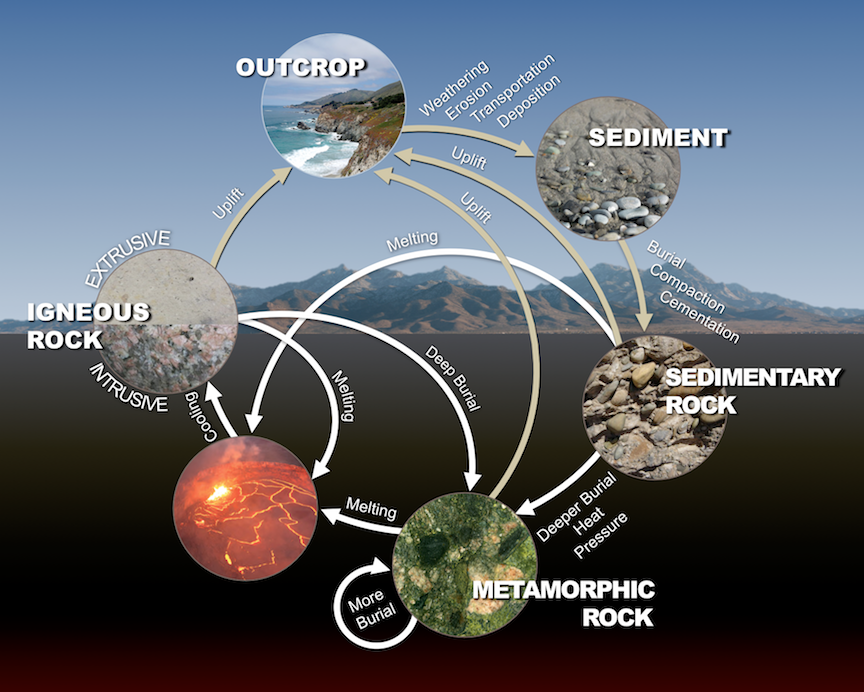
The rock cycle is still active on Earth because our core is hot enough to keep the mantle moving, the atmosphere is relatively thick, and there is liquid water. On some other planets or their satellites (e.g., Mercury), the rock cycle is virtually dead because the core is no longer hot enough to drive mantle convection, and there is no atmosphere or liquid water.
We can start anywhere we like to describe the rock cycle, but it’s convenient to start with magma. Magma is melted rock located within the Earth. Rock can melt at between about 800 °C and 1300 °C, depending on the minerals in the rock, and the pressure the rock is under. If it cools slowly within the Earth (over centuries to millions of years), magma forms intrusive igneous rocks. If magma erupts onto the surface, we refer to it as lava. Lava cools rapidly on Earth’s surface (within seconds to years) and forms extrusive igneous rocks (Figure 6.4).[1]
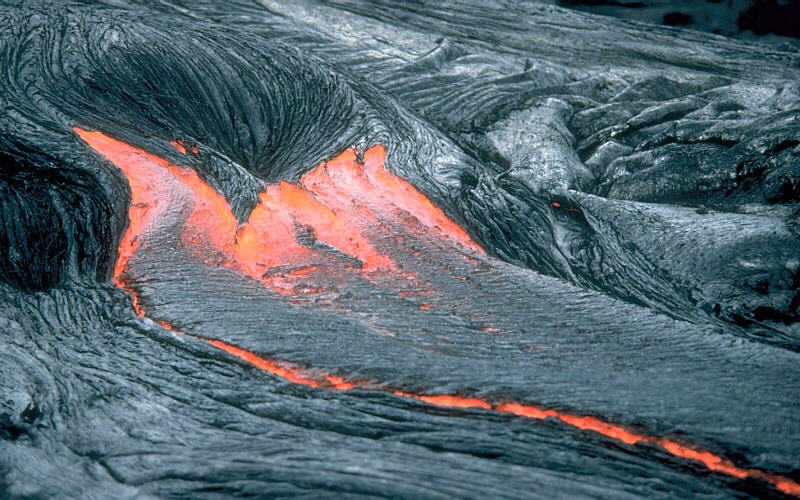
Mountain building lifts rocks upward where they are acted upon by weathering. Weathering includes chemical processes that break rocks apart, as well as physical processes. Figure 6.5 shows the result of rocks in mountains being broken apart when water gets into cracks, freezes, and forces the cracks wider. Uplift through mountain building is how rocks once buried deep within Earth can be exposed at Earth’s surface.

The weathering products — mostly small rock and mineral fragments — are eroded, transported, and then deposited as sediments. Transportation and deposition occur through the action of glaciers, streams, waves, wind, and other agents. Figure 6.6 shows transportation of fine-grained sediment particles by wind during the Great Depression in the 1930s.
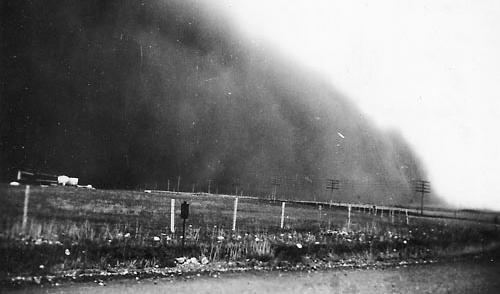
Sediments are deposited in stream channels, lakes, deserts, and the ocean. Some depositional settings result in characteristic sedimentary structures, such as the ripples that formed when flowing water moved sand along the bottom of the South Saskatchewan River (Figure 6.7).
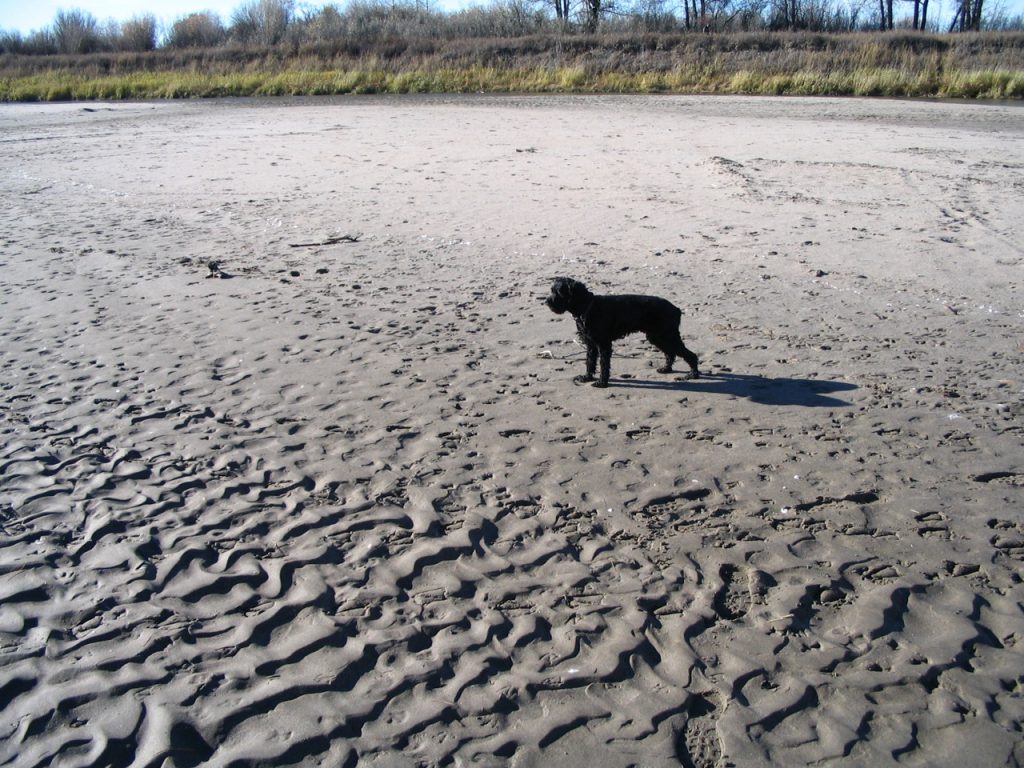
Unless they are re-eroded and moved along, sediments will eventually be buried by more sediments. At depths of hundreds of metres or more, the sediments become compressed, forcing particles closer together. Mineral crystals grow around and between the particles, binding them together (cementing them). The hardened cemented sediments are sedimentary rock. Figure 6.8 shows an example of an ancient sedimentary rock in which ripple structures are preserved, and visible in cross-section as wavy lines.
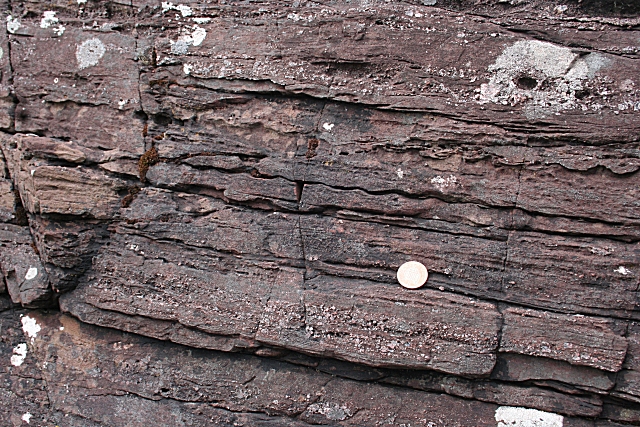
Rocks that are buried very deeply within the crust can reach pressures and temperatures much higher than those at which sedimentary rocks form. Existing rocks that are heated up and squeezed under those extreme conditions are transformed into metamorphic rocks (Figure 6.9). The transformation to a metamorphic rock can happen through physical changes, such as when the minerals making up an existing rock re-form into larger crystals of the same mineral. It can also happen through chemical changes, when minerals within the rock react to form new minerals.
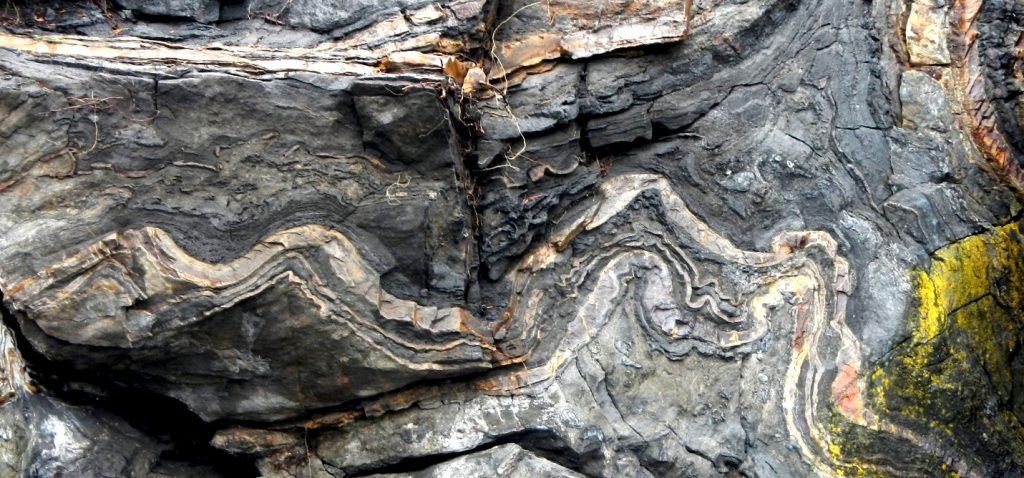
- Remember the difference between intrusive and extrusive igneous rocks by recalling that INtrusive rocks form withIN the Earth, and EXtrusive rocks form when lava EXits the Earth's crust. ↵

